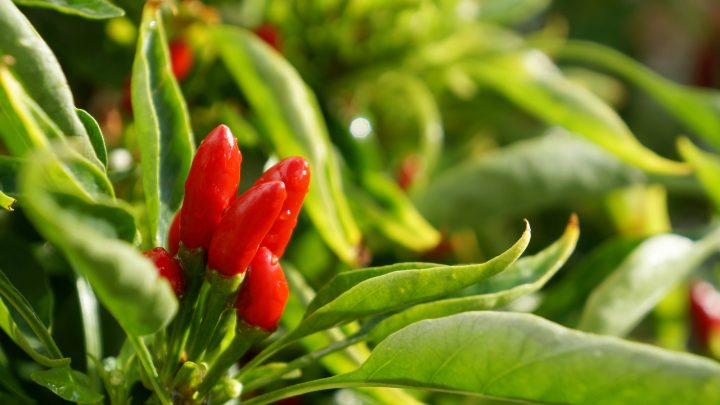Your cart is currently empty!

Green Chilli Gardening Tips

Chilies are one of the most commonly used vegetables in Indian households. They grow well in warm conditions, and accelerated growth can be achieved by providing plenty of warmth and light exposure.
Green chillies grow best in premium, well-draining vegetable compost or peat-free potting mix. They also benefit from regular application of a water-soluble vegetable feed, particularly one that contains high levels of potassium (the potassium helps chillies to bear fruit). This is applied at planting time and every other week.
Sow the Seeds Early
The seeds germinate best in the month of January and February, as they require warmth to grow. Sowing them early in the season also gives them enough time to ripen before the weather turns cold again.
Spread the seed evenly on a paper towel, cover it with another paper towel and keep it in a warm place, sprayed with water. Repeat this process for a week and the seeds should sprout.
Once the seedlings have two leaves, move them to a medium to large pot. Make sure the container has adequate drainage holes in the bottom. It’s a good idea to add a handful of well-rotted manure or compost into the soil at planting time, as green chilli plants grow best in rich, fertile soil.
When the plant is about eight to ten inches high, it will begin producing small buds that eventually blossom into beautiful little white flowers. These will remain on the plant for 7 to 10 days before falling off, making room for a new crop of chilies.
Prepare the Soil
Chillies grow best in warm, well-drained soil. Use premium, loose, well-organised potting mix, or make your own, and mix in some rotted manure or compost at planting time. This will give the plant the nutrients it needs to flourish, while protecting against disease and insect pests. It’s also a good idea to add 5-10 gm of neem cake at the time of soil preparation; it will help protect the young plants from soil-borne diseases and pests.
Once the seeds have germinated and the saplings are a few inches tall, repot them into small individual pots or containers. It is important that each seedling is planted in its own container, because chillies are very cross-pollinating and you don’t want to mix the seedlings up.
Water the new plants frequently, but not excessively – green chilies are susceptible to damping off and may not thrive in wet conditions. Fertilize the plant with a liquid fertilizer every 2 to 3 weeks throughout the growing season.
Plant in Containers
Chillies do well in containers, especially if the soil is amended with plenty of organic matter. Fill a seed tray or 10cm pots with a premium, well-draining potting mix and plant the seeds a thin layer deep. Then cover with a light sprinkling of vermiculite, to retain the warmth and moisture.
Water the seeds regularly, but make sure the soil doesn’t remain waterlogged – chilli plants need good drainage. It’s a good idea to use a compost that contains perlite or grit, to improve the quality of the soil and to help it drain more efficiently.
When the seedlings have two leaves, transplant them into a larger container or pot – preferably one that is glazed to help prevent heat loss. When they are fully established, chillies need regular feeding with a high-potash fertiliser, which you can add to the soil by hand or using a liquid feed. As the plants grow, it is a good idea to re-pot them into slightly larger pots, starting with a half litre, then a litre and finally three litre – this will encourage them to branch out and become taller.
Harvesting
Chillies can be grown in garden beds, pots, containers or even window boxes. However, they do need some heat and sun to thrive.
When planting chillies in the ground it is best to use a rich, well-draining soil. Mix in some organic matter such as manure or compost before planting. If growing in containers or pots, a good quality Tui Vegetable mix is ideal.
Give the plant a light feed with a balanced liquid fertiliser once per week. Avoid using a high nitrogen fertiliser as this can promote leaf growth at the expense of fruit production.
Green chillies are usually ready for harvest from late summer. For milder flavour, pick the chillies before they turn red but allow them to ripen for a richer flavour and more heat. When harvesting, wear gloves to protect your hands from the spicy oils. Alternatively, you can snip the entire plant with garden shears. Be sure to wash your hands after handling.
by
Tags: